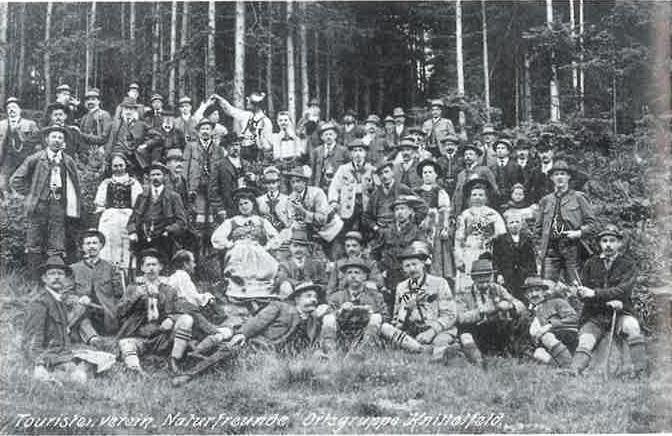
003 | Fighting for the free right of way
The increase of tourism created a new conflict: vast areas of the Austrian forest and mountain areas were property of the Austrian imperial family, influential aristocrats, and industrialists who used the grounds for forestry and hunting. Hunting used to be a leisure-time pursuit, which was interrupted by people looking for rest and relaxation.
Therefore, many landowners started to close off roads. A permit was required to enter areas owned by the imperial family. Those who trespassed on closed-off areas risked being reported to the police, which could even entail the loss of one’s employment.
In 1906, Naturefriends introduced the section “The forbidden road” in their association’s newspaper and thus publicly denounced the blatant barriers that people looking for rest and relaxation were faced with. Delegates of the Social Democratic Party picked up on the issue but were unsuccessful at first. It was only after World War I that tensions were somewhat diffused as grounds that had formerly been owned by aristocratic families and the imperial family were opened to the public. In 1920, a law on the free right of way in the mountains was adopted in Salzburg; other provinces followed this example. In 1975, the free right of way in forests on the entire national area was enshrined in law, but to this day, landowners are trying to restrict the recreational use of their land. The Naturefriends greeting “Berg frei!” symbolises the long fight for free right of way.
A contribution to the following UN Sustainable Developement Goals: